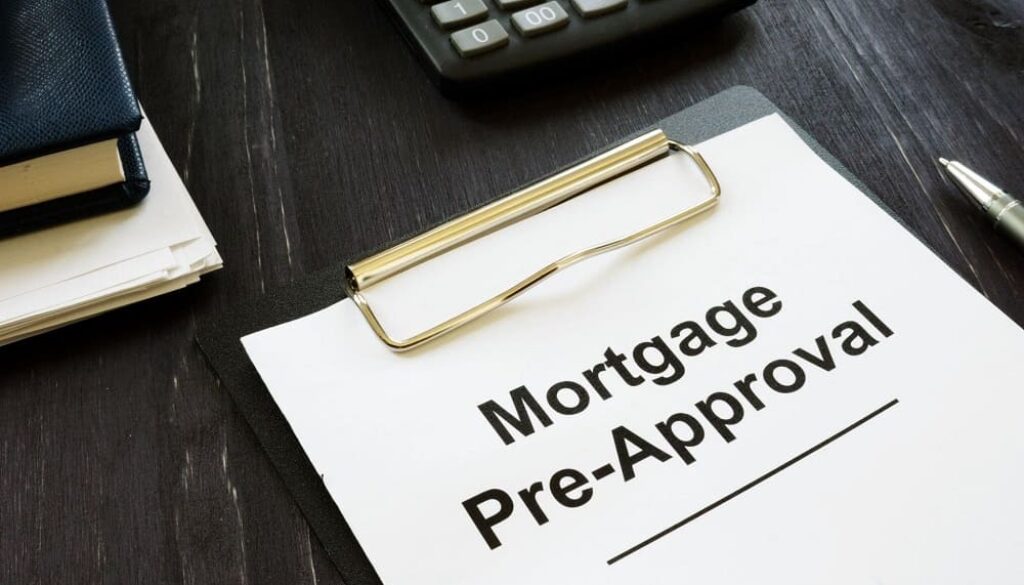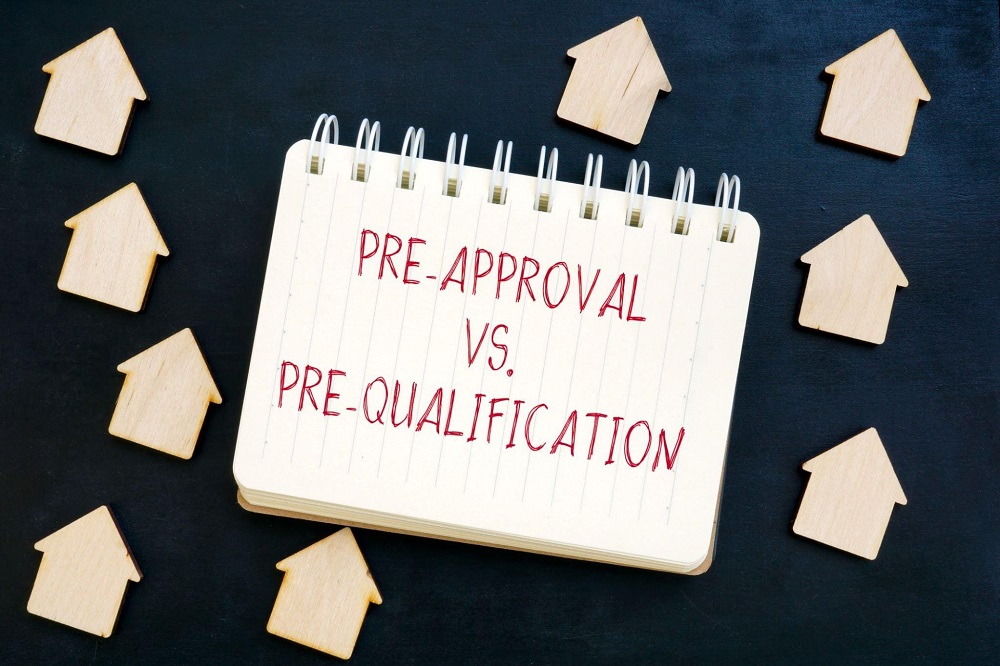How to Get Pre-Approved For a Mortgage
Securing a pre-approval for a mortgage is an essential step for prospective homebuyers, offering them a clearer picture of their purchasing power in the competitive real estate market. Before house hunting, understanding the pre-approval process can give buyers a significant advantage, ensuring they are viewed as serious contenders by sellers. This process involves a preliminary evaluation by a lender, determining the loan amount one might be eligible to receive. Let’s delve into the steps and requirements for getting pre-approved for a mortgage, ensuring a smoother home buying journey.
What is a Mortgage Pre-Approval?
A mortgage pre-approval is a preliminary assessment conducted by a mortgage lender to determine how much money they are willing to lend you for buying a home. It is based on an evaluation of your financial information, including your income, credit score, and other relevant factors. Getting pre-approved for a mortgage gives you a clear idea of the loan amount you can qualify for, allowing you to set a realistic budget when shopping for a home.
During the pre-approval process, the lender reviews your employment history and financial documents: pay stubs, tax returns, bank statements. They also perform a credit check to assess your creditworthiness. This evaluation helps the lender understand your financial stability and capacity to repay a mortgage.
If you meet the lender’s criteria, they will issue a pre-approval letter. This letter outlines the maximum loan amount you are eligible for and often includes an estimated interest rate. The pre-approval letter demonstrates to real estate agents and sellers that you are a serious and qualified buyer, potentially giving you an advantage in competitive housing markets.
A mortgage pre-approval is not a binding agreement to lend you money; it is a preliminary step in the mortgage application process. Once you find a home and make an offer, the lender will conduct further assessments, including property appraisals and final underwriting, before granting the actual mortgage loan.
Since your financial situation can change over time pre-approvals have an expiration date, typically around 60-90 days. If you do not find a suitable home within that timeframe, you may need to go through the pre-approval process again.
In summary, a mortgage pre-approval is an initial evaluation by a lender that gives you a clear understanding of how much you can borrow for purchasing a home, making the home-buying process more efficient and effective.
How to Get Pre-Approved For a Mortgage?
Here’s a step-by-step guide on how to get pre-approved for a mortgage:
- Check your credit report: Your credit score plays a significant role in mortgage approval and the interest rate you will receive. Check your credit report for any errors and work on improving your score if needed.
- Gather Financial Documents: Lenders will require various documents to assess your financial stability. These typically include:
- Proof of income (pay stubs, tax returns, W-2s)
- Proof of assets (bank statements, investment accounts)
- Employment history (lenders typically ask for a two-year employment history)
- Residence history (lenders will want to document a two-year rental payment history)
- Research lenders: Look into different lenders and their mortgage programs. Compare interest rates, fees, and customer reviews to find a lender that suits your needs.
- Apply for pre-approval: Contact your chosen lender and apply for pre-approval. This involves filling out an application form and submitting the required documents. Many lenders offer online applications for convenience.
- Wait for evaluation: The lender will evaluate your financial documents, credit score and history, and other relevant information.
- Receive pre-approval letter: If you meet the lender’s criteria, they will issue a preapproval letter. This letter specifies the loan amount you are eligible for and the interest rate. Now you can start shopping for homes.
Each lender’s process may have slight variations in their pre-approval process, so be sure to follow their specific instructions.
Pre-Approval vs Pre-Qualification
Pre-approval and pre-qualification are both terms used in the context of mortgage lending, but they refer to different stages of the home loan process and have varying levels of reliability. Here is a breakdown of the differences between pre-approval and pre-qualification:
Pre-qualification is an initial assessment of your financial situation based on the information you provide to a lender. It is a relatively quick and informal process (usually takes 1 to 2 days) where you provide details about your income, debts, and assets. The lender then gives you an estimate of how much you might be able to borrow. However, pre-qualification does not involve a thorough underwriter’s review of your financial documents. As a result, it is a rough estimate and does not carry as much weight when making offers on homes.
Pre-approval is a more in-depth and meaningful step. It involves a comprehensive review of your financial documents, credit history, and other relevant factors. The lender verifies the information you provide, which makes pre-approval more accurate and reliable. A pre-approval can take from 1 to 2 weeks. If you meet the lender’s criteria, they issue a pre-approval letter, specifying the exact loan amount you are eligible for and often including an estimated interest rate. This letter carries more weight when you make offers on homes because it demonstrates that you have undergone a thorough financial evaluation.
In summary, pre-approval is a more robust step in the mortgage process. While pre-qualification can offer a preliminary idea of your borrowing potential, pre-approval provides a more accurate estimate and holds more weight when you are actively searching for a home and making offers.
How long is Pre-Approval Good For?
A mortgage pre-approval typically has an expiration period, which can vary depending on the lender and their policies. Pre-approval expiration periods commonly range from 60 to 90 days, although some lenders might offer shorter or longer durations.
The reason pre-approvals have an expiration date is that your financial situation can change over time. Factors like changes in your employment status, credit score, debt levels, or other financial circumstances can impact your eligibility for a mortgage. Lenders set an expiration date to ensure that the information they used to pre-approve you remains current and accurate.
If your pre-approval expires before you have found a home you will likely need to go through the pre-approval process again. This might involve providing updated documents and having your financial situation re-evaluated by the lender.
Keep track of the expiration date on your pre-approval letter and communicate with your lender if you foresee any delays in finding a suitable property within the specified timeframe.
Does Pre-Approval Require a Hard Credit Check?
Yes, obtaining a mortgage pre-approval usually involves a hard credit check. When a lender performs a hard credit check, they pull your complete credit report from the major credit bureaus (Equifax, Experian, and TransUnion). This type of credit inquiry can impact your credit score by a few points, but is unlikely to significantly affect the result of the pre-approval.
A hard credit check is necessary for a lender to thoroughly assess your credit history, debt obligations, and overall creditworthiness. It helps them make an accurate determination of whether you qualify for a mortgage and what interest rate you might be eligible for.
What if I Do Not Get Pre-Approved
If you do not get pre-approved for a mortgage, it might be disappointing, but it is not the end of your home-buying journey. Here is what you can consider doing if you are not able to get pre-approved:
- Identify the Reasons: If your pre-approval application was declined, it is important to understand the reasons behind the decision. Lenders typically provide reasons for the denial, which could include factors like a low credit score, insufficient income, high debt-to-income ratio, or other financial issues. Understanding these reasons can help you address the issues before reapplying.
- Improve Your Financial Situation: If the reasons for the denial are related to your credit score or financial stability, you might need to take steps to improve your situation. This could involve paying down debts, building a better credit history, or increasing your income.
- Work with a Financial Advisor: Consider consulting a financial advisor or credit counselor who can help you create a plan to improve your financial standing and increase your chances of getting pre-approved in the future.
- Explore Different Lenders: Different lenders might have varying underwriting criteria, so it is worth to apply with a few lenders to ensure that you do not miss an approval. Just be mindful that each application could result in a hard credit inquiry.
- Consider a Co-signer: If your income situation is preventing you from getting pre-approved, you might consider applying for the mortgage with a co-signer. Keep in mind that this option involves shared responsibility for the mortgage.
Remember that not getting pre-approved is a setback, but it is not the end of your homeownership goals. With careful planning, financial adjustments, and persistence, you can work toward improving your eligibility and eventually securing a mortgage.
Does a Pre-Approval Cost Anything?
In many cases, obtaining a mortgage pre-approval does not cost anything. Most lenders offer pre-approval as a service to potential homebuyers to help them understand their borrowing capacity and set a budget for their home search. Note that while the pre-approval itself is often free, there might be associated costs indirectly, like the credit report or the lender’s application fee.
Before proceeding with a pre-approval, ask your lender about any potential costs involved. Reputable lenders should be transparent about their fees and provide clear information upfront.
Final Thoughts
Getting pre-approved for a mortgage is an essential step in the home-buying process. It helps you understand how much you can afford and shows sellers that you are a serious buyer. Remember that a pre-approval is not a guarantee of a mortgage loan. The final approval will depend on factors like the property’s appraisal and any changes in your financial situation. If you are actively looking for a home and your pre-approval is about to expire, it is a good idea to contact your lender and discuss your options for renewing or updating your pre-approval.
Please reach out to me for additional guidance on your pre-approval at 312-296-4175 or email me at connect@borislending.com. I lend in all 50 states and I am never too busy for your referrals!!
I have been in the mortgage industry since 1997 and I understand the anxiety that comes with making the most expensive investment of a lifetime. My objective is to be your advisor, to educate you and to make the mortgage loan transaction as transparent and as stress-free as possible. I enjoy establishing personal connections and work mostly by referral. I thoroughly explain the process and available options, and guide my clients to make choices that best fit their needs and financial goals. Once the underwriting begins I communicate regularly and keep my clients apprised of the loan status from the beginning through the end. My relationship with clients does not end at the closing table. You are my client for life and I am always available to answer your questions and provide you with guidance.


